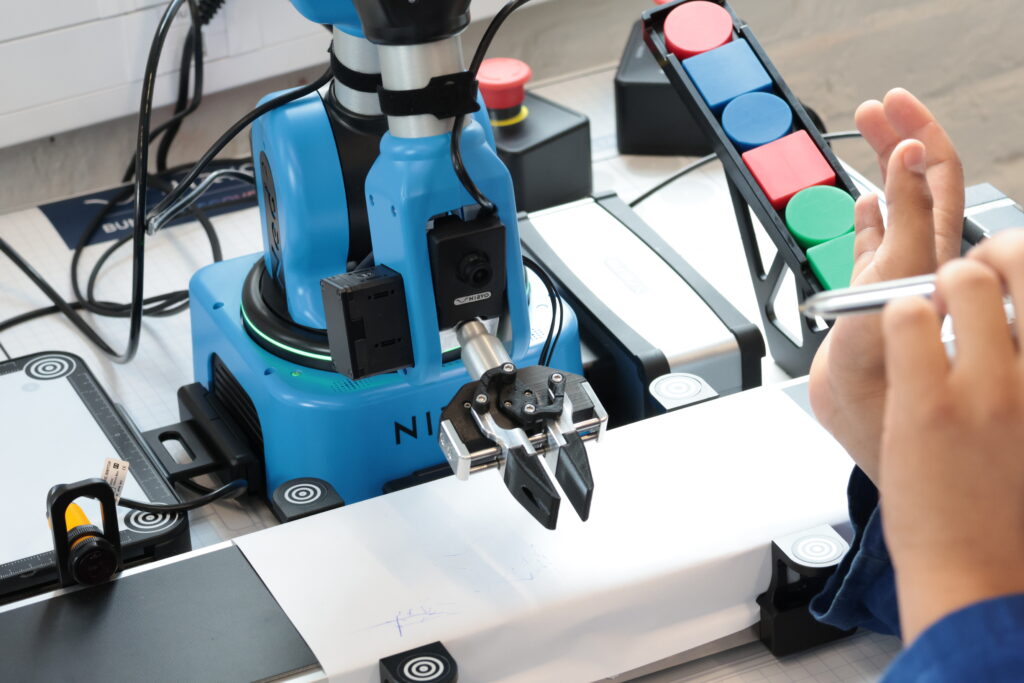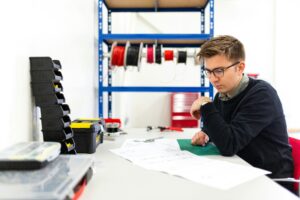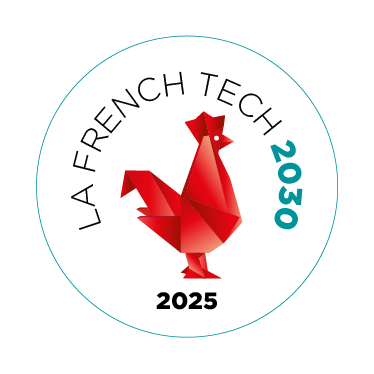Robotics is constantly evolving, and collaborative robots, or cobots, represent a significant advancement in this field. Unlike traditional industrial robots, designed to perform repetitive tasks in isolated environments, cobots are designed to work closely with humans.
The integration of cobots into engineering schools has become a necessity. Indeed, they offer an ideal playground for developing new skills in programming, robotics, and artificial intelligence. Students can gain practical experience in collaborative robotics, preparing them for the challenges of Industry 4.0. This article aims to present the advantages of using cobots in teaching robotics. We will explore potential educational applications, challenges to overcome, and the opportunities these technologies offer for the future of engineering education.
The benefits of collaborative robots in education
Cobots, or collaborative robots, offer exciting new perspectives in education. Their specific design makes them particularly suitable for educational environments, complementing more traditional educational robotic kits like Lego Mindstorms, Thymio, or Ozobot.
Safety
Safety is a top priority in any learning environment. Cobots are designed to work in direct collaboration with humans without the risk of injury. Thanks to their sensors and integrated safety systems, they detect any contact and stop immediately. This feature makes them ideal for classroom use, where students can interact with them safely.
Flexibility
Flexibility is another major advantage of cobots. They are easy to program and reconfigure to perform different tasks. This characteristic allows them to be adapted to a wide variety of projects and educational activities. What’s more, their relatively compact size and light weight make it easier to integrate them into various learning spaces.
Affordability
Cobots are generally more affordable than traditional industrial robots, making them more accessible to schools and universities. Additionally, their ease of use allows them to be quickly integrated into robotics and programming courses.
Students motivation
Cobots make learning robotics more fun and engaging for students. By working with a cobot, they can bring their projects to life in a concrete and stimulating way. This boosts their motivation and engagement in learning.
Collaborative robots: new tools for learning
Collaborative robots, or cobots, are revolutionizing education. By integrating these robots into classrooms, educational establishments are offering students a unique and stimulating learning experience.
Learning programming
Cobots are becoming true educational tools for learning programming. Thanks to intuitive programming languages, students can easily program the movements and actions of these robots. This playful approach fosters the development of skills in algorithms and problem-solving.
Simulating industrial processes
By replicating miniature production lines with cobots, students can simulate real industrial processes. They thus learn to optimize procedures and improve the efficiency of production systems. These learning robots allow for a better understanding of the challenges of Industry 4.0.
Research and development
Cobots also open up new perspectives for research and development. Students can create prototypes and design new applications for these robots. By collaborating with businesses, they can carry out concrete research projects and thus foster an innovative mindset.
Challenges and perspectives for integrating cobots in education
The integration of cobots (collaborative robots) into educational institutions marks a significant advancement in the field of education. However, this transition raises several challenges and opens promising prospects for the future of learning.
Challenges of integrating cobots in schools
The deployment of cobots in schools requires overcoming significant technical obstacles:
- Acquisition and maintenance costs: The purchase and maintenance of robots to be programmed can represent a significant investment for schools, particularly for smaller ones.
- Teacher training: Training teachers in the use of these new technologies and their integration into educational programs is essential to ensure effective use of cobots.
- Adaptation of curricula: The introduction of cobots requires a redesign of school programs to offer activities and projects suited to these new tools.
Future perspectives
First of all, the continuous development of new educational tools, such as Lego Mindstorms, Thymio, or Ozobot robotic kits, is making the integration of cobots in schools more accessible and affordable. These fun and efficient tools allow students to handle robots intuitively, thus facilitating the learning of programming and robotics concepts.
Moreover, artificial intelligence plays an increasingly important role in the evolution of educational robotics. By equipping cobots with machine learning and reasoning capabilities, it is possible to create more natural and personalized interactions with students. This opens new prospects for personalizing learning paths and developing skills such as problem-solving and creativity.
Finally, collaboration between schools and robotics companies is a key lever to accelerate the integration of these technologies into schools. These partnerships allow schools to benefit from cutting-edge equipment, specialized training provided by experts, and the opportunity to participate in innovative research projects. They thus promote the development of local innovation ecosystems and strengthen the appeal of scientific and technological fields.

















